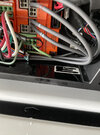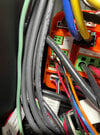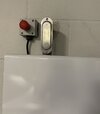Has anyone else had water ingress into their inverter(s) via conduit coming from your roof (solar)? It’s been raining here a lot and I can see water coming into my inverter from the top port. On the opposite side of the wall outside, the conduit 90s up to my roof. Note that my Powerwalls are inside my enclosed garage.
I’m still awaiting PTO and already working with my project advisor to hopefully have the local team redo this same conduit run before I noticed this particular issue. I’ve sent pictures to my PA. Regardless, I’d like to get some input from the community to see if others have experienced this. I understand these systems are designed to be mounted outdoors, like my Backup Gateway 2 is. And I see the drain holes in this particular unit.
My install photos: Post Your Tesla Solar Layout
I’m still awaiting PTO and already working with my project advisor to hopefully have the local team redo this same conduit run before I noticed this particular issue. I’ve sent pictures to my PA. Regardless, I’d like to get some input from the community to see if others have experienced this. I understand these systems are designed to be mounted outdoors, like my Backup Gateway 2 is. And I see the drain holes in this particular unit.
My install photos: Post Your Tesla Solar Layout





